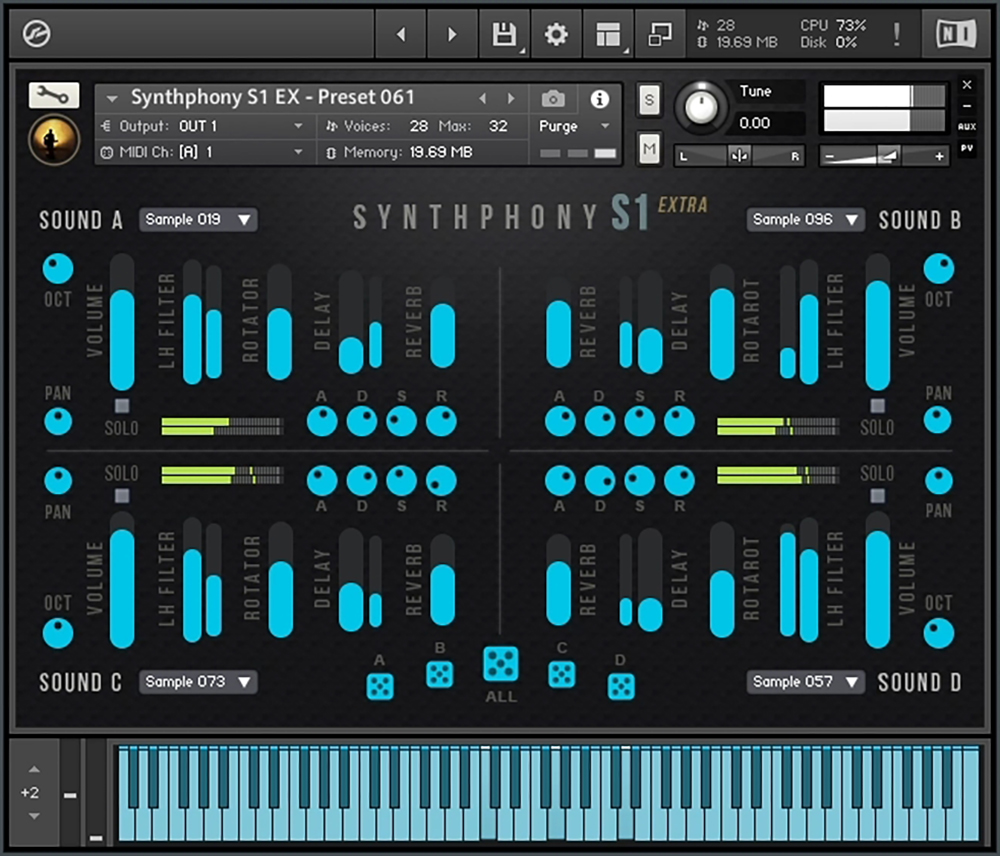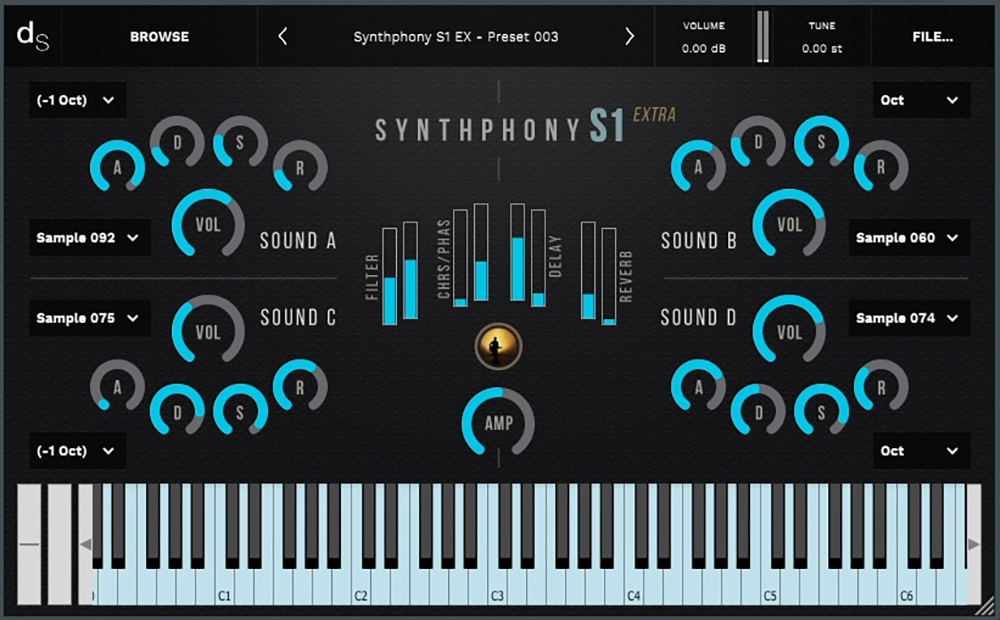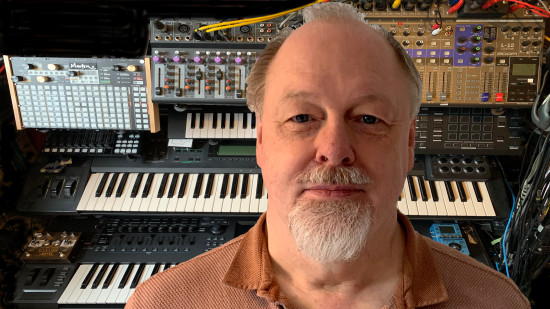
The story
Synthphony S1 is created for music producers to discover sounds they want in the easy and flexible ways. The samples in the library are generated from Python computer scripts which was carefully crafted, and there are no real instruments involved in the sampling process. The library itself generates sounds from 4 independent sound sources. Each sound source can be independently selected from the list of samples and mixed for output. The possibilities & combinations are countless. A variety of sounds such as Pads, Plucks, Leads and many more can be easily discovered and created.
Simply solo one of the Sounds and turn the volume controls up to start with, select the octave and adjust the Effects & ADSR to discover new sounds. Another easier way to explore new parameters setting combinations for the sounds that have never been heard before is to click on the “Randomise” buttons. Synthphony S1 (Kontakt version only) features 5 Randomisation buttons, 1 for All parameters & the other 4 randomise each sound source independently.
Synthphony S1 is avaiable for Kontakt 6 (Full Version) & Decent Sampler. Kontakt & Decent Sampler are two different Samples Player. You will notice that the output sounds from both players are different as both of their Effects engine is not the same. It will be a good idea to have both libraries installed to complement each other and make them a good combination for sounds and music productions.
4 Independent Sound Sources for Decent Sampler & Kontakt 6 L
Interface


Reviews for Synthphony S1
- Sound
- Character
- Playability
- Inspiration
- GUI
Leave a review to let others know what you thought of the instrument!
Incredible basses
I have been amazed with this package. It's amazing how many combinations you can make with the samples. The basses are out of this world, simply incredible.
And what to say about the interface design, it is simply magnificent. I love the order in which the controls are placed. I love the color you chose, the blue looks great with the background and gives a fresh and modern touch to the resource.
Infinite inspiration!
This is an example of how a simple idea can produce literally near-infinite variations! The amount of inspiration that someone can get out of such an instrument is unthinkable!
The Kontakt and DecentSampler versions offer a completely dofferemt spimd necaise pf the separate unique FX engine that each sampler uses. That means that even the included presets will sound different from each other, with the sum of 34 in total! And to top it all off, the Kontakt version offers Randomize buttons that literally create infinite combination possibilities, considering the options!
And, what? All that, for the ridiculously small size of just 41MB? Sign me up!
Four waves for waves...
I've previously reviewed the dual sound 'Synthphony 1 and 2' from this samplist. This S1 takes those ideas and extends it to four sounds at once, with an extended commercial version available on Gumroad (alongside a MIDI Chord pack...).
Four sounds at once certainly gives a lot of choice and tweakability, and the UI is very clear and easy to understand, despite having to squash all of these controls onto a single page. What is missing is any way to add dynamics control via velocity, so there's just the 'Amp' volume control for that... There aren't any MIDI CCs mapped to controls, but you could easily add this yourself with a little bit of XML editing in the .dspreset file. The Kontakt version has a randomisation feature, but not the Decent Sampler version that I'm reviewing here.
The sounds betray their origins: Python-based wavetables were mentioned in the previous releases, and this one sounds much the same. Having four sound sources, each with its own envelope, provides a lot of control over the final sound, but ultimately, it is vector wave synthesis, and so there are limitations to the range of sounds that can be produced. If you like that selection, then this is an easy way to get a taster of a much broader selection available in the commercial S1 Extra version.
But there are drop-down menus for sample selection as well as Octave transposition, which will make it easy to try out the range of sounds that can be produced. I'm not sure that I would want to select from 120 samples using a drop down menu in the full version, but for the 8 samples here it works fine.
In conclusion, the four separate sound sources mean that there are a lot of possible sounds to explore, even with only a small number of samples. The commercial version hugely expands on the available samples, and so should have a larger palette. I would have liked more control over dynamics - four sounds work very nicely with velocity layers. But this free version is a good taster that anyone who wants a readily accessible set of synthetic timbres could use in a wide range of projects.



